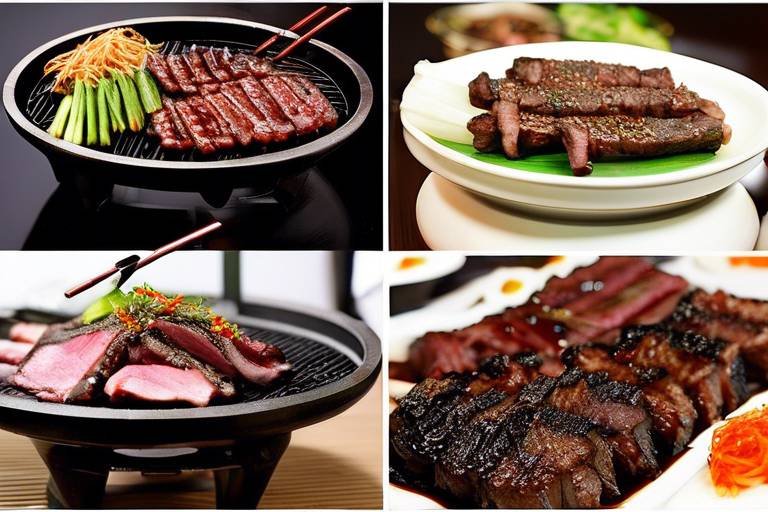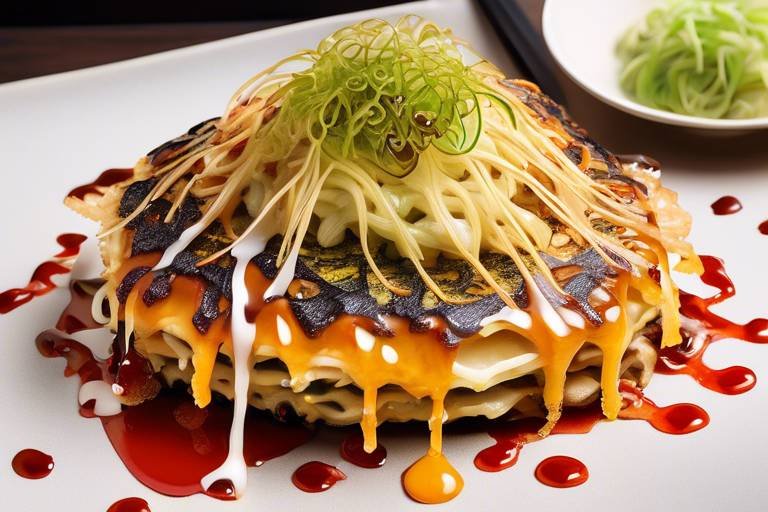The Ultimate Guide to Classic Greek Spanakopita
Spanakopita, a classic Greek dish, is a delectable savory pastry that encapsulates the essence of Mediterranean flavors. This iconic treat is a harmonious blend of fresh spinach, tangy feta cheese, aromatic herbs, and delicate phyllo dough. With each bite, you embark on a culinary journey steeped in tradition and taste, making Spanakopita a beloved dish both in Greece and beyond.

History of Spanakopita
Spanakopita, the beloved Greek dish, has a rich history that dates back centuries. Originally hailing from Greece, Spanakopita has become a staple in Mediterranean cuisine and a favorite worldwide. The name "Spanakopita" comes from the Greek words "spanaki" meaning spinach and "pita" meaning pie or pastry, reflecting the dish's key ingredients and pastry structure.
Historically, Spanakopita was enjoyed during religious holidays and celebrations, with variations in recipes based on regional preferences and seasonal availability of ingredients. The combination of fresh spinach, flavorful herbs, and creamy feta cheese wrapped in crispy phyllo dough has stood the test of time, evolving into the classic Spanakopita we know today.
Spanakopita's popularity has transcended borders, making its way into households and restaurants around the globe. Its versatility and delicious flavors have cemented its status as a beloved dish, often served at family gatherings, festivals, and special occasions. The enduring appeal of Spanakopita lies in its simple yet satisfying combination of ingredients that create a harmonious culinary experience.

Ingredients for Spanakopita
When it comes to creating the perfect Spanakopita, the key lies in selecting the finest ingredients that come together to form a harmonious blend of flavors. The essential components for crafting this classic Greek dish include:
| Fresh Spinach: | Rich in vitamins and minerals, fresh spinach forms the base of Spanakopita's filling, providing a vibrant green color and earthy flavor. |
| Feta Cheese: | A tangy and creamy cheese that adds a salty kick to the dish, feta cheese pairs perfectly with the spinach, creating a decadent filling. |
| Phyllo Dough: | A delicate and thin pastry dough that creates the flaky layers of Spanakopita, adding a crisp texture to each bite. |
| Onions: | Sautéed onions bring a sweet and savory flavor to the filling, complementing the spinach and feta cheese beautifully. |
| Herbs: | Aromatic herbs such as dill and parsley are essential for adding depth and freshness to the Spanakopita filling, enhancing its overall taste profile. |
| Olive Oil: | High-quality olive oil is used to sauté the onions and spinach, infusing the dish with a rich and fruity flavor that ties all the ingredients together. |
Each of these ingredients plays a crucial role in the creation of Spanakopita, contributing to its unique blend of flavors and textures. The combination of fresh spinach, tangy feta cheese, flaky phyllo dough, aromatic herbs, and savory onions results in a mouthwatering dish that is beloved by many.
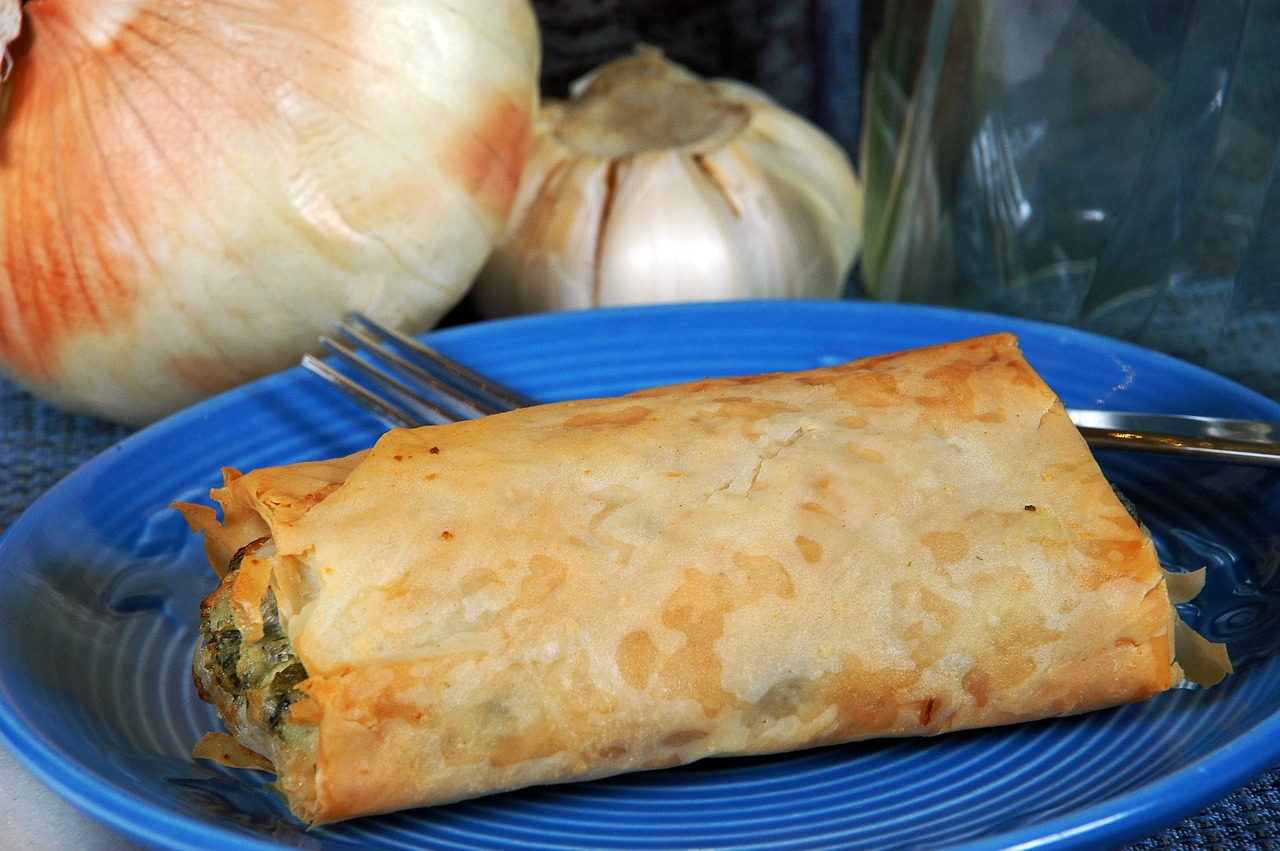
Preparation of Spanakopita
When it comes to preparing the delectable Greek dish Spanakopita, attention to detail is key. The process of creating this savory pastry is an art form that requires precision and care. To start, gather all the necessary ingredients: fresh spinach, tangy feta cheese, delicate phyllo dough, flavorful onions, aromatic herbs, and rich olive oil. Each component plays a crucial role in achieving the perfect balance of flavors and textures in Spanakopita.
Begin the preparation by wilting the spinach with onions and herbs in a pan, allowing the flavors to meld together harmoniously. Once the filling is ready, it's time to layer the phyllo dough, brushing each sheet with olive oil to create a crispy and golden crust. The layering process is crucial, as it ensures that every bite of Spanakopita is filled with a delightful combination of spinach and feta cheese.
As you assemble the pastry, remember to handle the delicate phyllo dough with care, as it can tear easily. Layer by layer, build up the Spanakopita until the filling is enclosed in a flaky and buttery crust. Before baking, be sure to brush the top layer with olive oil to achieve a beautiful golden finish that will tempt your taste buds.
Once the Spanakopita is baked to perfection, allow it to cool slightly before cutting into portions to serve. The aroma of the freshly baked pastry combined with the savory filling will surely tantalize your senses and leave you craving more. Whether enjoyed as a snack, appetizer, or main course, Spanakopita is a versatile dish that never fails to impress.
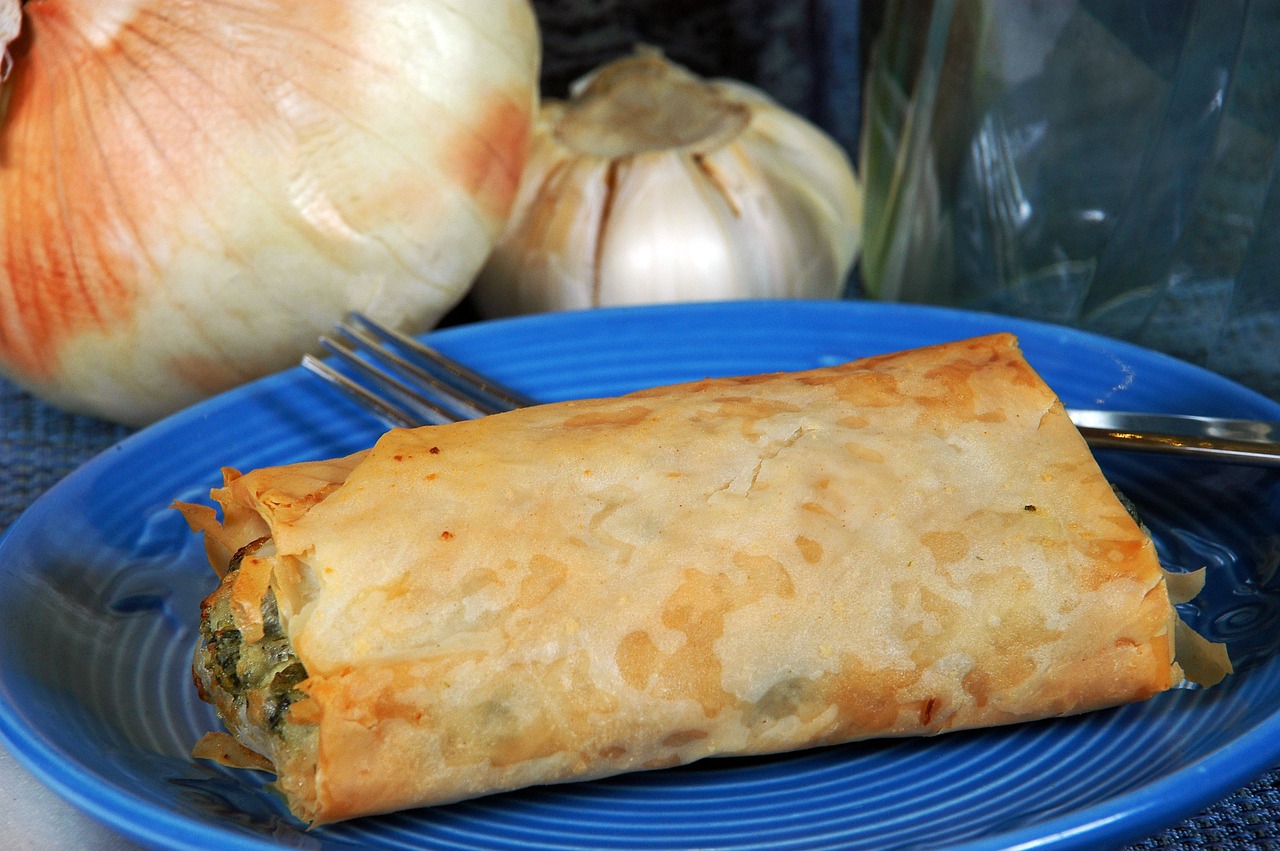
Variations of Spanakopita
When it comes to Spanakopita, the classic Greek dish offers a world of possibilities for creative variations and unique twists. From traditional recipes passed down through generations to modern interpretations that cater to different dietary preferences, there is no shortage of innovative ways to enjoy this beloved pastry.
One popular variation of Spanakopita involves transforming the traditional large pie into bite-sized appetizers. These mini Spanakopita bites are perfect for parties and gatherings, offering a convenient and portable way to enjoy the flavors of spinach and feta in a single bite. By using smaller phyllo dough sheets and shaping them into individual parcels, these mini versions provide a delightful twist on the original recipe.
For those following a plant-based diet, vegan Spanakopita offers a delicious alternative that is free from animal products. By substituting feta cheese with dairy-free alternatives or incorporating tofu as a creamy filling, vegan Spanakopita showcases how versatile this dish can be while catering to a wider range of dietary needs. The use of nutritional yeast and savory seasonings can also enhance the flavors of the filling, creating a plant-based masterpiece that is both satisfying and flavorful.
In some regions, Spanakopita is prepared with additional ingredients to add depth and complexity to the dish. Variations may include the addition of pine nuts for a crunchy texture, raisins for a hint of sweetness, or dill for a refreshing herbal note. These regional twists highlight the adaptability of Spanakopita, allowing cooks to experiment with different flavor profiles and ingredients to create a personalized version of this classic recipe.
Furthermore, creative presentations of Spanakopita can elevate the dining experience and add a visual appeal to the dish. Some chefs opt to shape Spanakopita into individual triangles or spirals, showcasing their culinary skills and attention to detail. By playing with shapes and sizes, Spanakopita can be transformed into an elegant appetizer or a stunning centerpiece for a Mediterranean-inspired feast.
Whether you prefer the traditional recipe or enjoy exploring new variations, Spanakopita offers a versatile canvas for culinary experimentation and creativity. By embracing different ingredients, techniques, and presentations, you can discover a world of flavors within this iconic Greek pastry.

Serving and Pairing Spanakopita
When it comes to serving and pairing Spanakopita, there are a few key considerations to keep in mind to truly elevate the dining experience. This classic Greek dish can be enjoyed in various ways, whether as a tasty appetizer, a flavorful side dish, or a satisfying main course. The versatility of Spanakopita allows it to adapt to different meal settings, making it a favorite among both hosts and guests.
Pairing Spanakopita with the right accompaniments can enhance its flavors and create a well-rounded meal. A popular choice is to serve it with a refreshing Greek salad, featuring crisp cucumbers, juicy tomatoes, tangy feta cheese, and Kalamata olives drizzled with olive oil and a sprinkle of oregano. This combination offers a balance of textures and flavors that complement the richness of the Spanakopita.
For a more substantial meal, consider pairing Spanakopita with grilled vegetables such as zucchini, eggplant, and bell peppers. The smoky char from the grill adds depth to the dish, while the vegetables provide a light and healthy contrast to the pastry's richness. Additionally, a dollop of tzatziki sauce on the side can add a creamy and tangy element that ties everything together.
When it comes to beverages, Spanakopita pairs well with a variety of wines, including crisp white wines like Sauvignon Blanc or Assyrtiko. The acidity of these wines cuts through the richness of the dish, cleansing the palate with each sip. If you prefer red wine, opt for a light-bodied red like Pinot Noir or a fruity rosé to complement the savory notes of the Spanakopita.
Whether you're hosting a gathering or simply enjoying a cozy meal at home, serving Spanakopita with the right pairings can take your dining experience to the next level. Experiment with different combinations to find your favorite way to enjoy this classic Greek dish.

Health Benefits of Spanakopita
When it comes to Spanakopita, the health benefits go beyond just its delicious taste. This classic Greek dish is not only a flavorful treat but also a nutritious addition to your diet. Packed with essential vitamins, minerals, and antioxidants, Spanakopita offers a range of health benefits that make it a guilt-free indulgence.
One of the key ingredients in Spanakopita is spinach, which is a nutritional powerhouse. Spinach is rich in iron, calcium, and vitamins A and K, making it beneficial for bone health, immunity, and overall well-being. By incorporating spinach into Spanakopita, you can enjoy these health benefits in a delicious and satisfying way.
Additionally, feta cheese, another staple in Spanakopita, provides a good source of protein and calcium. Protein is essential for muscle growth and repair, while calcium is crucial for strong bones and teeth. Combined with the other ingredients like onions, herbs, and olive oil, Spanakopita offers a well-rounded nutritional profile.
Moreover, the use of olive oil in Spanakopita adds heart-healthy monounsaturated fats to the dish. Olive oil is known for its anti-inflammatory properties and is linked to reducing the risk of heart disease. By using olive oil in the preparation of Spanakopita, you not only enhance the flavor but also boost its nutritional value.
Overall, Spanakopita can be a wholesome and satisfying meal choice that provides a balance of nutrients essential for your body's health and vitality. Whether enjoyed as a snack, appetizer, or main course, this classic Greek dish offers a delightful way to nourish your body while treating your taste buds.

Spanakopita in Popular Culture
Spanakopita, the delicious Greek pastry filled with spinach and feta cheese, has not only captured the hearts and taste buds of food enthusiasts but has also made its mark in popular culture. This iconic dish has been featured in various forms of media, including literature, films, and television shows, showcasing its cultural significance and culinary appeal.
One notable mention of Spanakopita in popular culture is its appearance in the beloved film "My Big Fat Greek Wedding." In a memorable scene, the character Aunt Voula proudly presents her homemade Spanakopita to the protagonist's non-Greek fiancé, introducing him to the flavors of Greek cuisine and family traditions.
Moreover, Spanakopita has been referenced in literary works as a symbol of Greek hospitality and comfort food. Authors often use descriptions of Spanakopita to evoke images of cozy family gatherings, warm kitchens filled with the aroma of baked goods, and the simple joys of sharing a meal with loved ones.
Additionally, the widespread popularity of Spanakopita has led to its inclusion in cooking shows and culinary competitions, where chefs showcase their unique interpretations of this classic dish. Viewers are treated to creative variations, innovative presentations, and expert tips on mastering the art of making Spanakopita at home.
Overall, Spanakopita's presence in popular culture serves as a testament to its enduring appeal and timeless charm. Whether portrayed as a symbol of Greek heritage, a culinary delight, or a source of comfort and nostalgia, Spanakopita continues to captivate audiences worldwide and inspire a love for Mediterranean cuisine.
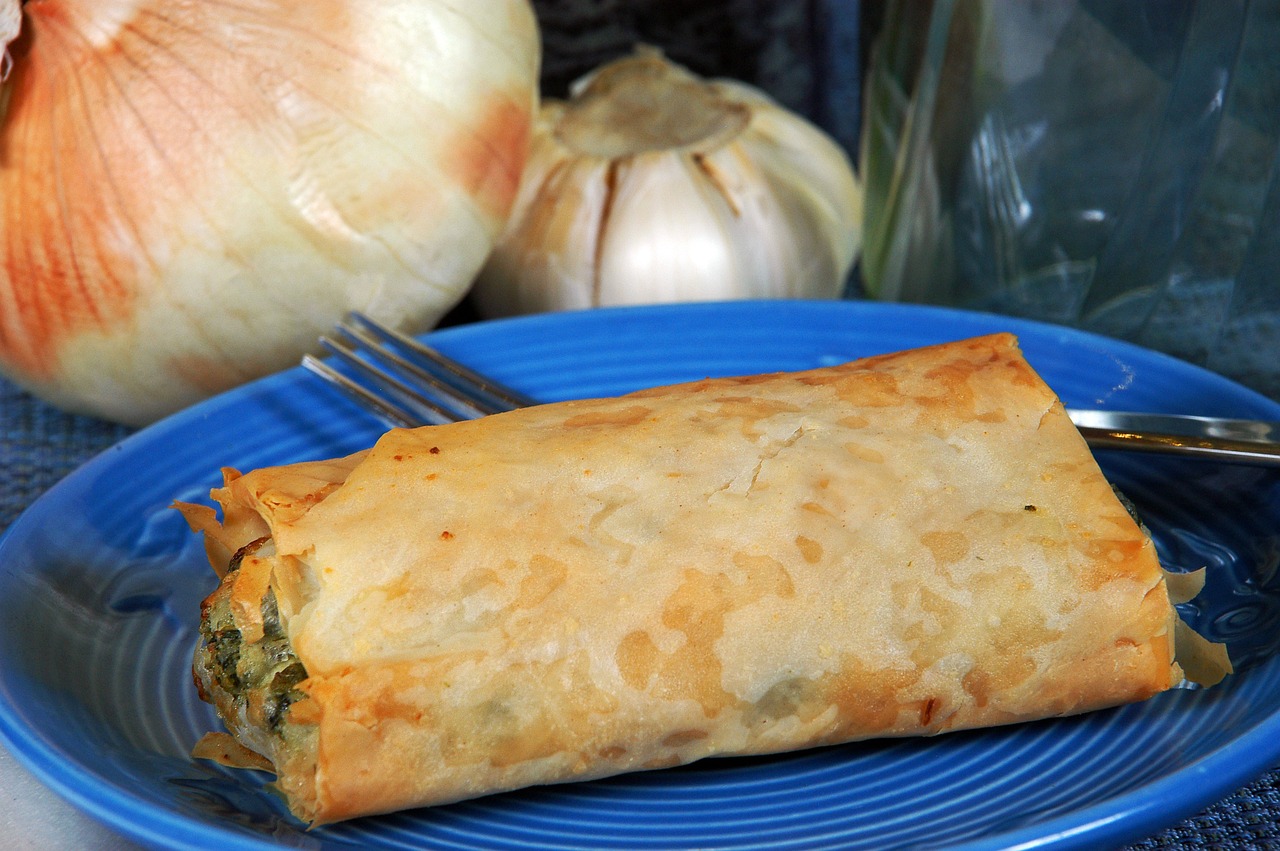
Tips for Perfect Spanakopita
When it comes to creating the perfect Spanakopita, attention to detail is key. To ensure your savory pastry turns out just right, consider the following expert tips and tricks.
First and foremost, mastering the art of handling phyllo dough is crucial. This delicate pastry can be tricky to work with, so be sure to thaw it properly and keep it covered with a damp cloth to prevent it from drying out.
When preparing the filling, make sure to thoroughly squeeze out any excess moisture from the spinach to prevent a soggy bottom crust. Additionally, layering the phyllo dough with a generous brushing of olive oil between each sheet will result in a crispy and golden-brown finish.
For the perfect balance of flavors, consider adding a touch of nutmeg or lemon zest to the filling to enhance the overall taste profile of your Spanakopita. Experimenting with different herbs and spices can also add depth and complexity to the dish.
When baking your Spanakopita, keep a close eye on it to ensure it doesn't overcook. The pastry should be evenly golden and crisp, with the filling set and the cheese melted to perfection.
Lastly, allow your Spanakopita to cool slightly before serving to allow the flavors to meld together. Whether enjoyed warm or at room temperature, this classic Greek dish is sure to impress with its delicious flavors and flaky texture.
Frequently Asked Questions
- What is Spanakopita?
Spanakopita is a traditional Greek dish that consists of a savory pastry filled with a delicious mixture of spinach, feta cheese, onions, herbs, and olive oil. It is a popular Mediterranean treat known for its flaky phyllo dough and flavorful filling.
- How is Spanakopita typically served?
Spanakopita can be served in various ways, such as an appetizer, side dish, or even a main course. It pairs well with a variety of dishes and can be enjoyed hot or at room temperature. It is a versatile dish that suits different occasions.
- Are there any health benefits to eating Spanakopita?
Yes, Spanakopita offers several health benefits due to its nutritious ingredients. Spinach is rich in vitamins, minerals, and antioxidants, while feta cheese provides protein and calcium. When consumed in moderation, Spanakopita can be a wholesome addition to a balanced diet.
- What are some common variations of Spanakopita?
There are many creative variations of Spanakopita, including mini bite-sized versions, vegan options, and different herb and cheese combinations. Some regions also add pine nuts or raisins to the filling for added texture and flavor.
- How can I ensure my Spanakopita turns out perfectly?
To achieve the perfect Spanakopita, it's essential to handle the delicate phyllo dough with care, ensure the filling is well-seasoned, and bake the pastry until golden and crispy. Following a detailed recipe and using fresh, quality ingredients are key to success.






